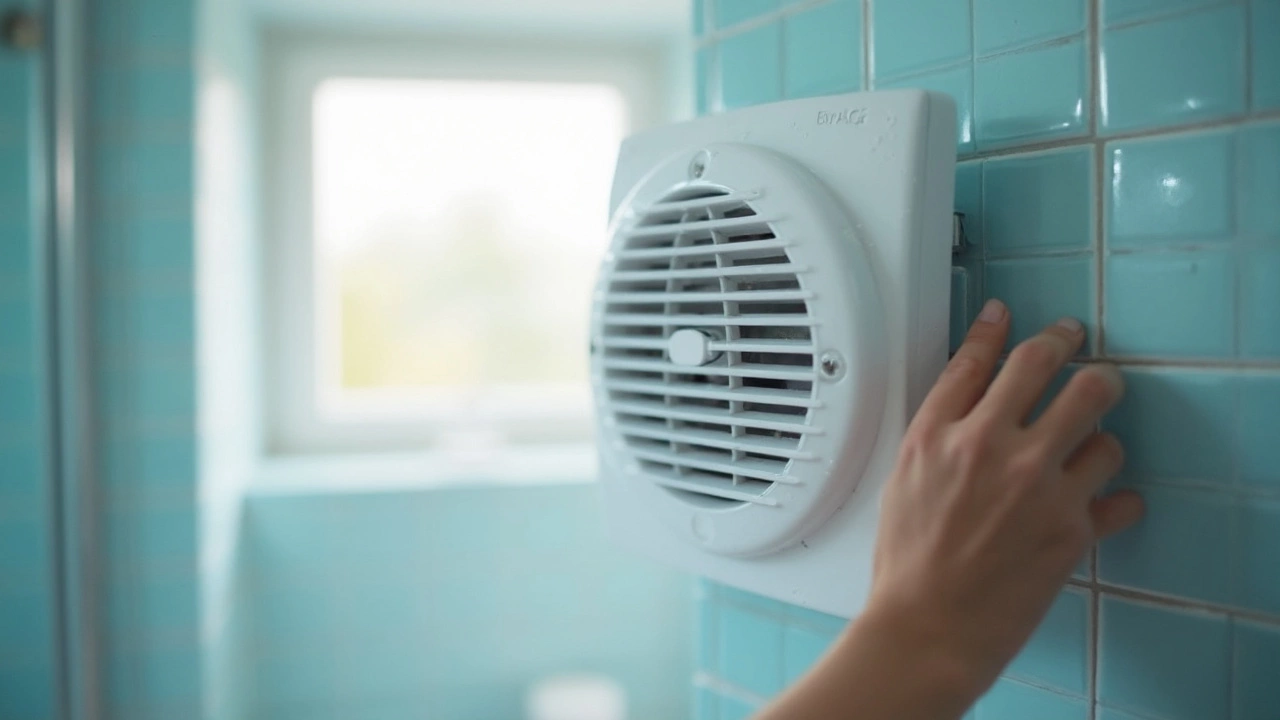If your kitchen always feels stuffy no matter how long the fan's been running, or the bathroom stays steamy forever, you’re probably wondering if your extractor fan is just for show. Lots of people never actually check their fans—until something smells funky or mould starts creeping in.
The good news: testing whether your extractor fan is doing its job only takes a few minutes, and you don’t need any tools at first. One super simple method is the tissue test—just hold a sheet of toilet paper up to the grill when the fan’s on. If it sticks, your fan’s pulling air. If it flutters or falls, you might have a problem.
Another real-world hint is the noise level. A fan that’s suddenly a lot louder (or way quieter) than usual often means trouble. Fans should hum, not sound like a jet engine or whisper like they’re hiding from you—consistent, steady noise usually means things are working as they should.
- What Does a Properly Working Extractor Fan Look Like?
- Quick DIY Tests at Home
- Common Problems and Warning Signs
- Simple Maintenance Tips
What Does a Properly Working Extractor Fan Look Like?
A well-functioning extractor fan isn’t mysterious—it just gets the job done, clearing out steam, smoke, or bad smells fast. If you flick the switch and feel a steady airflow at the vent, that’s already a good sign. The real proof, though, is in what you see and smell after a shower or while frying up bacon.
Here’s what you’ll notice when your extractor fan is working right:
- Fast Clearing: Steam, smoke, or odors disappear from the room in just a few minutes, not half an hour.
- Consistent Noise: The fan makes a steady, low humming sound—not rattling, grinding, or clicking.
- Solid Airflow: You can feel air being pulled out if you hold a strip of tissue up to the vent.
- No Dust Clouds: The grill looks pretty clean, with just a fine layer of dust (big buildups block airflow).
Ever wondered how effective your fan really is? According to UK building regs, a bathroom extractor fan should move at least 15 liters of air per second. For kitchens, it jumps to 30 l/s near a cooker. Cheap models sometimes fall short and just recirculate stale air, so it’s worth knowing the numbers.
| Room | Expected Air Flow |
|---|---|
| Bathroom | 15 l/s |
| Kitchen (near hob) | 30 l/s |
It’s not just about speed. A good extractor stops condensation building up on mirrors or windows. People often skip this detail, but if you spot droplets or a damp patch days after using the fan, it’s a warning sign. Working fans are meant to keep surfaces dry and mold-free. Visible steam or sticky air means something’s off.
Finally, pay attention to smells. If stale, musty odors linger—especially in windowless rooms—the fan is probably not venting air well, or not at all. Quick tip: After a hot shower, if you can still write your name on the steamed-up mirror several minutes later, time to check that fan!
Quick DIY Tests at Home
You don’t need to be a professional to size up your extractor fan at home. There are a few classic tricks that make fan troubleshooting fast and straightforward—even if you’ve never messed with home repairs before.
The most popular is the tissue or toilet paper test. Here’s how you pull it off:
- Turn on your extractor fan.
- Hold a single sheet of toilet paper or tissue flat against the vent or grill.
- If the tissue holds in place on its own, the suction is working. If it drops off or barely moves, there’s an issue pulling air.
Another super simple check? Just steam up the room. After a hot shower, leave the fan running and shut the door for about ten minutes. Come back—if it’s fog-free or much less steamy, your fan is working hard. Still feels like a sauna? Time to look closer.
Don’t forget about the ol’ look-and-listen test. Stand near the vent and pay attention. Can you feel a small but steady airflow coming out of the vent outside? Or hear a steady, moderate hum (not stuttering, screeching, or silence)? If not, something’s off.
If you have access to the outside vent, check there as well. Sometimes, a working indoor fan doesn’t actually give results outside due to a blocked duct. Place your hand by the external vent and feel for warm, moist air blowing out. If the vent flap is stuck closed or barely moving, it’s probably blocked or the fan’s too weak for the job.
All these quick checks help you figure out if your unit is up to the task, without needing special tools or advanced skills. Just trust your eyes, ears, and, yeah, even a simple piece of toilet paper.

Common Problems and Warning Signs
When an extractor fan isn’t pulling its weight, your home tells you in sneaky ways. Smells that stick around long after a shower or a steamy meal are red flags. If the paint on your walls starts peeling, or you spot patches of damp or mould, your fan could be falling down on the job. Some folks even notice rust building up on the grill or screws—another classic sign of poor ventilation.
Noise changes are another giveaway. If your fan used to hum steadily but now grinds, rattles, or whines, you might have loose parts, worn bearings, or just heaps of dust stuck inside. A completely silent fan, if it’s supposed to be running, usually means the motor’s gone or there’s a wiring issue.
Don’t ignore weak airflow. If you try the tissue or paper test and the sheet doesn’t stick, your extractor fan is hardly moving air at all. This could be caused by blockages like clogged filters, dust, or even a bird nest in an outside vent! Some fans have a flap or damper that can get stuck shut, cutting airflow to nearly nothing.
Basic warning checklist:
- Persistent odours in the room after using the fan
- Visible mould growth or damp patches nearby
- Paint bubbling or flaking off the walls and ceiling
- Fan making weird (or no) noises when switched on
- No ‘pull’ during the tissue paper test
It’s usually worth flipping the fan switch a few times to be sure. If the symptoms stick around, that’s your cue to check for a simple fix—like clearing dust—or call in someone for repairs before things get worse.
Simple Maintenance Tips
Keeping your extractor fan in top shape isn’t rocket science. You just need to show it a little attention every couple of months. Dust and grime love to pile up inside the vent, and if you ignore it, airflow slows down and the fan wears out faster.
- Turn off the power before you mess with anything—safety first.
- Pop off the fan cover. Most covers just unclip, but you might need a screwdriver for older models.
- Wash the cover with warm, soapy water. Let it dry before snapping it back on.
- Vacuum the fan blades and the vent opening. Lint, dust, and even cobwebs can choke the motor if left too long.
- If the blades are greasy (like in a kitchen), wipe them gently with a damp cloth.
- Check for any odd rattling or wobbling. That can mean a loose screw or something caught in the blades.
Most fans just need this quick clean to keep going strong, but according to experts, a deeper clean is smart once a year. "Clogged fans can lose up to 30% of their airflow efficiency,” says the U.K. Building Engineering Services Association.
“A fan that’s clogged with dust or grease can’t move air properly and will wear out much faster. Regular cleaning helps you hold onto your investment.”
Here’s a quick look at how much difference just a little clog can make:
| Fan Condition | Airflow Efficiency |
|---|---|
| Brand New | 100% |
| Light Dust | 90% |
| Heavy Dust or Grease | 70% |
| Clogged, Poorly Maintained | Below 60% |
The best trick is to add a calendar reminder every three months—nobody remembers on their own. Clean fans keep the air fresh, stop mold growth, and even save you money on repairs.
And don’t forget: if your extractor fan humming turns to a rattle or you spot brown marks around the casing, it’s calling out for maintenance. Ignore it, and the next step might be a full-on breakdown (which gets pricey, fast).





